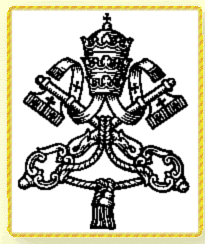I plan to also write several profiles of a few of the secular institutes which are active in the United States.
What is a secular institute?
The 1983 Code of Canon Law defines secular institutes in this way:
“A Secular Institute is an institute of consecrated life in which the faithful, living in this world, strive for the perfection of charity and endeavor to work for the sanctification of the world from within.”
Secular institutes are different from Third Orders because while they serve similar purposes, secular institutes are not a lay branch of a religious order. Rather, they an organization, structure and administration of their own.
Who are the members of these institutes?
Members of Secular Institutes are single lay men and women, as well as priests. Some institutes have an associate membership of married persons, and there is an institute for men and women who are married, engaged, or widowed.
Like members of religious orders, members of Secular Institutes make vows of poverty, chastity, and obedience. Since they are not living in community, the vow of poverty can take non-traditional forms. Normally, members will live a simple life and consult with their institutes regarding financial matters.
While some members of Secular Institutes are employed by the Church, most have jobs outside the Church. Members of Secular Institutes are doctors, secretaries, teachers, artists, etc. Often, these members will not disclose their membership so they do not interfere with their secularity. However, they must disclose their membership to their diocesan bishop.
Are Secular Institutes something new?
Although Secular Institutes were not officially recognized by the Church until 1947, the oldest Secular Institute, The Society of the Sacred Heart, was formed in 1790. Through the Apostolic Constitution Provida Mater Ecclesia, , Pope Pius XIII gave the official approval for Secular Institutes on February 2, 1947.
“For those who wish to do that but [lead a life of perfection] cannot or should not join a Religious Community, an Institute is often the answer. The effectiveness of Institute life in the Christian renewal of families, of secular professions, of society in general, through people's daily contact, from the inside of the secular scene, with lives perfectly and totally dedicated to God's sanctifying work in them is obvious. These Institutes also open the way to many forms of apostolate and service in times, places and circumstances from which priests and Religious are excluded by the nature of their calling, or which for other reasons are not accessible to them.”
Where can I find a Secular Institute?
There are currently over 200 secular institutes throughout the world, but only 27 are active in the United States. Some of these institutes are institutes of diocesan right and other are of pontifical right. The difference is from where they receive their permission. New institutes begin as diocesan right (their receive permission from their local bishop) and apply later on for pontifical approval (permission from the Pope).
There are also Associations of the Faithful which are groups which are working toward becoming Secular Institutes.
Read more about Secular Institutes at the United States Conference of Secular Institutes web site. http://www.secularinstitutes.org/










1 comment:
I note you say that the oldest secular institute is the Society of the Sacred Heart founded in 1790. How would therefore classify the Company of St Ursula, now known as the Secular Institute of St Angela Merici? The Company of St Ursula was founded in 1535 and is recognised by the USA Council of Serra International as the oldest pre-cursor of Secular Institutes.
Post a Comment